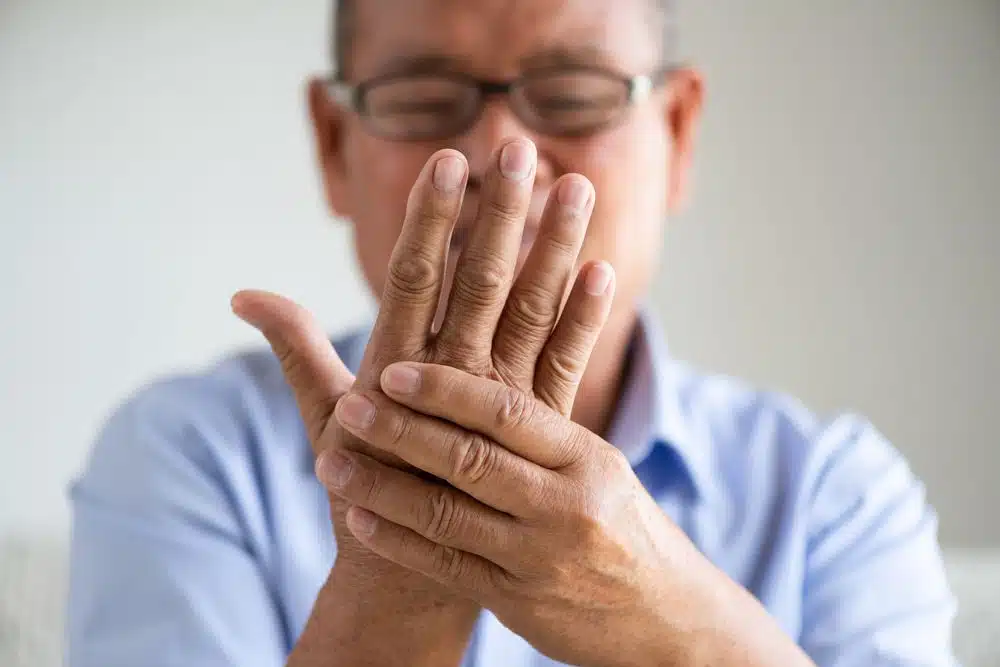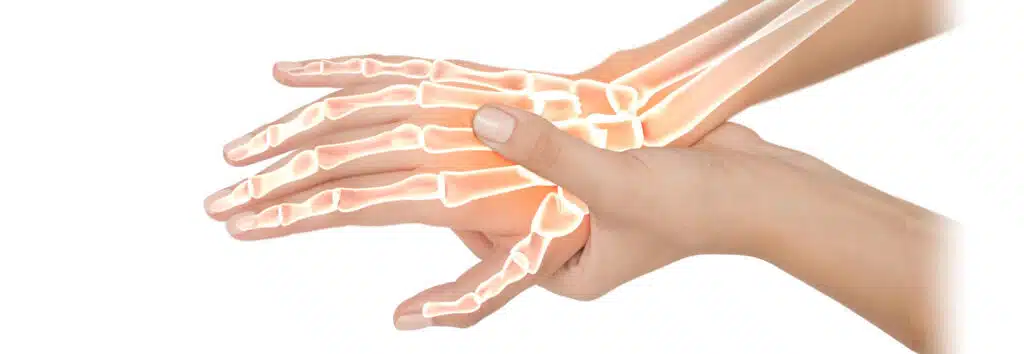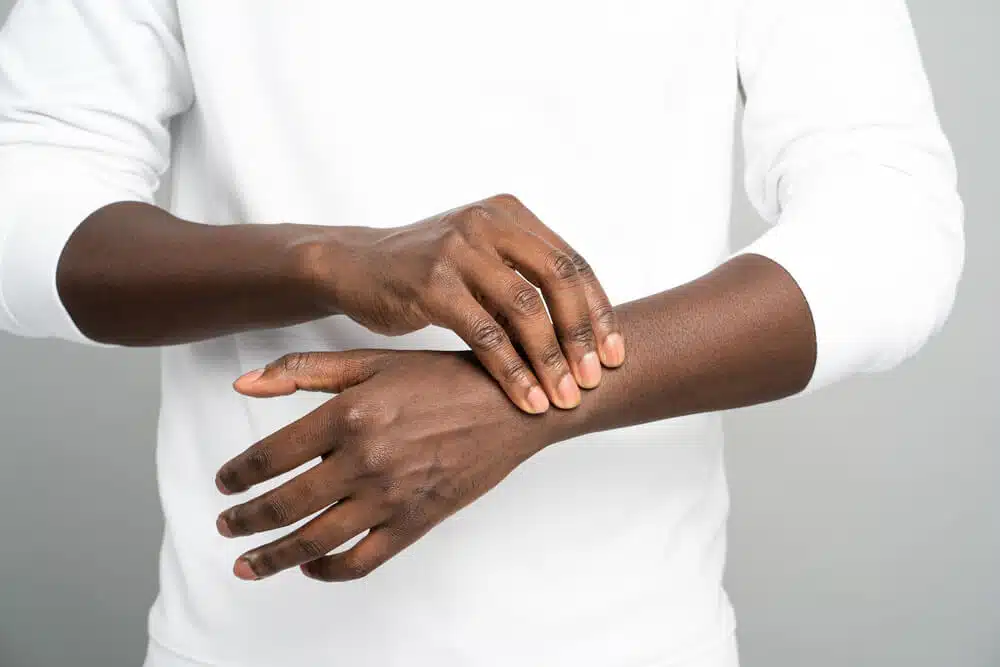This website uses cookies so that we can provide you with the best user experience possible. Cookie information is stored in your browser and performs functions such as recognising you when you return to our website and helping our team to understand which sections of the website you find most interesting and useful.
Patients with De Quervains Tenosynovitis have very painful tendons on the thumb side of their wrist. Tendons are the rope-like structures that the muscle uses to pull the bone. You can see them on the back of your hand when you straighten your fingers.
De Quervains tenosynovitis often happens when there is swelling in the tissue (sheaths) surrounding your thumb & wrist tendons. It can make it painful and hard to use your thumb and wrist.
It occurs when the 2 tendons around the base of your thumb become swollen. The swelling causes the sheaths (casings) covering the tendons to become inflamed. This puts pressure on nearby nerves, causing pain and numbness.
If the fibrous roof of the tunnel thickens, the tunnel becomes too tight, usually resulting in pain when you move your wrist and thumb. The pain becomes worse when your thumb is extended.



Sometimes your wrist and thumb may feel stiff and your thumb may lock slightly when you move it.
When the tendon sheath on the thumb side of your wrist becomes irritated and inflamed from overuse, thus making it difficult to move your thumb and wrist.
Continued repetitive motions of your wrist, thumb and hand can cause the development of De Quervains tenosynovitis. If you leave this condition untreated, your pain may spread all the way down your forearm and limit the movement of your thumb and wrist will become limited even further.
If you have a hand injury or chronic condition such as De Quervain’s Tenosynovitis, please contact us at Fairoaks Ortho. Dr. Pournaras & our staff have a great understanding of the complex network of blood vessels, nerves, muscles, ligaments, tendons, and bones that make up your hand and fingers. We can help you on your journey to feel better.
We know how important pain-free hand and finger motion and function is to our patients and the ability to do daily activities, including work, self-care, sports, we are here to help you. Our orthopedic practice specializes in hand, wrist, elbow and shoulder treatments, and we offer state-of-the-art nonsurgical and surgical care to treat a full range of hand and upper extremities injuries and conditions.
If you are experiencing De Quervains Tenosynovitis and need treatment, please contact us at Fair Oaks Ortho. Dr. Stephen W. Pournaras & our professional medical staff have a great knowledge of the complex network of blood vessels, nerves, muscles, ligaments, tendons, and bones that make up your hand and wrist and can help you to recover by simply contacting us today.
Frequently Asked Questions About De Quervains Tenosynovitis
De Quervain tenosynovitis is a condition that affects the tendons on the thumb side of your wrist, and it is extremely painful. This condition is named after Swiss Surgeon Fritz de Quervain.
- Pain near the base of the thumb.
- Numbness along the back of your thumb and index finger
- Swelling near the base of the thumb.
- A squeaking sound as the tendons move within the swollen sheaths.
- Difficulty moving the thumb and wrist when doing something that involves grasping or pinching.
- A “sticking” or “stop-and-go” sensation in the thumb when moving it.
Dr. Pournaras may give your the Finkelstein Test.
This will require you bend your thumb across the palm of your hand and bend your fingers down over your thumb. Then you bend your wrist toward your little finger. If you have pain on the thumb side of your wrist, you likely have de Quervain Tenosynovitis.
- Applying heat or ice to the affected area.
- Taking a nonsteroidal anti-inflammatory drug these include ibuprofen (Advil, Motrin) or naproxen (Aleve).
- Avoid activities that cause pain and swelling. Especially avoid those that involve repetitive hand and wrist motions.
- Steroid injections to reduce inflammation and relieve the pressure in the tendon sheath. These injections are very effective and are used regularly.
- Wear a splint 24 hours a day for 4 to 6 weeks to rest your thumb and wrist.
If you have mild symptoms, resting your wrist and thumb, wearing a splint at night, and taking anti-inflammatory painkillers such as ibuprofen may help.
A steroid injection into the base of your thumb can help treat the problem in 8 in 10 of our patients.
Dr. Pournaras often performs a surgical procedure called a release. The goal of this surgery is to “release” the tendon sheath that wraps around the base of your thumb, relieving pressure and friction and restoring movement at the base of your thumb.
This operation usually is performed under a local anaesthetic and takes about 30 minutes. Dr. Pournaras will make a small cut at the base of your thumb. He will then cut open the fibrous roof of the tunnel that is causing the de Quervain’s disease. This allows the tendons to glide freely through the tunnel. Next he will close the incision up.
This an outpatient surgery that you will be able to go home 2-3 hours after. Its important to rememeber: Keep your effected hand raised and bandaged for 2 days.
Gently exercise your fingers, writs and elbow to prevent stiffness. Regular exercise will help you to return to normal activities as soon as possible.
Make Your Appointment Today
Fair Oaks Orthopedics – Fairfax,VA


